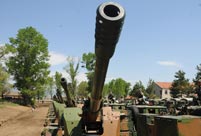

LHASA, Jan. 14 -- Southwest China's Tibet Autonomous Region plans to push its urbanization rate over 30 percent by 2020.
During Wednesday's urbanization conference, Tibet decided to increase the permanent urban population by nearly 280,000 by the year of 2020, with three cities or towns with populations up to 500,000, and two cities or towns with populations up to 100,000.
The number of towns and cities in the region has increased from 31 in 1990 to 140 in 2013. The urban population has hit 740,000 in 2013 against 287,000 in 1980. In the process, transportation, energy supplies and communications have also improved. The biggest city and regional capital Lhasa currently has a population of less than 300,000.
Tibet's urbanization still lags behind many regions, said Losang Jamcan, chairman of the regional government.
In 2014, urbanization in the region hit 25.7 percent, much lower than the national average of 54 percent.
Tibet wants to improve public services in small cities and towns to attract more talent and to boost local economies without ignoring environmental issues, said Losang Jamcan. The region can slow its pace, but cannot sacrifice the environment.
Last March, China unveiled national urbanization plan (2014-2020) to steer urbanization onto a more human-centered, environmentally friendly path.
 PLA soldiers operating vehicle-mounted guns in drill
PLA soldiers operating vehicle-mounted guns in drill Beauties dancing on the rings
Beauties dancing on the rings Blind carpenter in E China's Jiangxi
Blind carpenter in E China's Jiangxi Top 10 highest-paid sports teams in the world
Top 10 highest-paid sports teams in the world In photos: China's WZ-10 armed helicopters
In photos: China's WZ-10 armed helicopters UFO spotted in several places in China
UFO spotted in several places in China Certificates of land title of Qing Dynasty and Republic of China
Certificates of land title of Qing Dynasty and Republic of China  Cute young Taoist priest in Beijing
Cute young Taoist priest in Beijing New film brings Doraemon's life story to China in 3D
New film brings Doraemon's life story to China in 3D China-S.Korea FTA sets positive precedent
China-S.Korea FTA sets positive precedent Ferry carrying 458 people sinks in Yangtze River
Ferry carrying 458 people sinks in Yangtze River Mecca of Marxism
Mecca of Marxism Bring them home
Bring them homeDay|Week